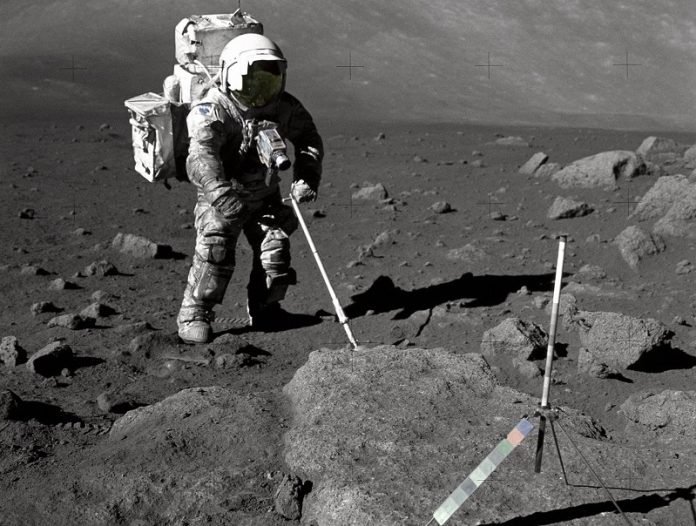
Imagine if you suddenly discovered you were 40 million years older than you believed.
That’s the surprise scientists had about the Moon!
A recent study shows that our lovely nighttime companion in the sky, the Moon, is much older than we used to think.
Here’s the story: Long ago, about 4 billion years back, when our solar system was just a toddler, a big thing (as big as Mars!) smashed into Earth. Ouch!
The pieces that flew off from that huge crash combined to make the Moon. But, no one really knew the exact ‘birthday’ of the Moon until now.
Using some super-special moon dust brought back by astronauts in 1972, scientists decided to play detective. This wasn’t any ordinary dust.
It had tiny crystals that are like time capsules, giving clues about when the Moon was born.
Philipp Heck, a big-shot scientist and the senior author of this study, explained how these crystals are super important.
They’re like the Moon’s baby pictures, telling us when it first formed. And by figuring out the age of these crystals, they got a better idea of the Moon’s age.
Jennika Greer, the lead scientist of the study, got excited when her team got a closer look at these samples.
Their method was a bit like zooming into the Moon’s past with a super-microscope. They used a cool technique called atom probe tomography.
It’s a fancy name, but think of it like this: they took the tiniest piece of the moon dust and looked at its atoms one by one. It’s a bit like counting grains of sugar, but way tinier!
Here’s the fun science part: Atoms change over time. Some atoms, like uranium, turn into other atoms, like lead, after a while. This change happens at a predictable rate, so scientists can use it like a clock.
It’s a bit like watching sand in an hourglass, where you can tell how much time passed by the amount of sand that’s fallen.
After counting and measuring these atoms, the scientists found out the age of the moon dust. Drum roll, please… The Moon is at least 4.46 billion years old! That’s 40 million years older than what we used to believe.
Jennika Greer said it felt amazing to know that the piece of rock they had was the oldest bit of the Moon they’ve found so far. It’s like holding a piece of ancient history in your hands. And when you know the age of something, it’s easier to understand its story and what it’s been through.
But why does the Moon’s age matter? Philipp Heck gave a great reason. The Moon is like Earth’s best buddy. It gives us tides, makes our days 24 hours long, and even keeps Earth from wobbling too much. Life on Earth would be totally different without the Moon.
So, understanding more about the Moon helps us understand more about our own planet and our place in the universe.
In short, the Moon just had a big birthday update, and this discovery is helping scientists piece together the big puzzle of our solar system’s history.
Follow us on Twitter for more articles about this topic.



